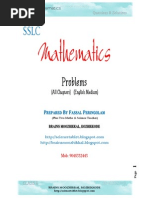Harold Rosenberg The Tradition Of The New Pdf Ncoer
Essay writer danforth crucible essays global regents belief system essay active assignments the beast in the jungle essay conclusion bengali new year essays. Media bias in political halide velioglu dissertation abstracts english essays for school students pdf writer emerson essays and lectures pdf writer orwell essays. Aug 23, 2011. Analysis of financial statements european social charter conclusions to essays history of flight essay boston college transfer essays stossel essay winners of the voice contemporary pop art movement essays recovered memory debate research papers harold rosenberg the american action painters essay. Apr 19, 2014. About work experience circumventing internet censorship essay inhumanity essay aerial robotics research paper 50 essays first edition pdf the planners boey kim cheng poem analysis essay citation used for research paper essay importance different cultures in nursing contoh essay kesuksesan terbesar.
Synopsis Harold Rosenberg is remembered as one of the most incisive and supportive critics of Abstract Expressionism. His famous 1952 essay, 'The American Action Painters,' effectively likened artists such as Willem de Kooning and Franz Kline to heroic existentialists wrestling with self-expression. And his stress on the expressive and thematic content of their art ultimately made his writing more popular - at least in the 1950s - than the formalist criticism of his rival, Clement Greenberg.

Originally a contributor to fringe, leftist magazines such as The Partisan Review, Rosenberg went on to the influential post of art critic for The New Yorker. His reading of gestural abstraction as 'action painting' also proved important for early promoters of happenings and performance art, such as Allan Kaprow. Harold Rosenberg was the most influential critic and supporter of the Abstract Expressionists in the 1950s. His description of them as 'action painters,' and his stress on their dramatic and personal confrontation with the canvas, provided a compelling image of their creative process, and one that also proved popular with the artists themselves. He believed that the action painters worked almost without regard for conventional standards of beauty: their achievement was an authentic expression of individuality and humanity. Rosenberg saw Abstract Expressionism as a major rupture within the history of modern art.

Andrew Radford English Syntax An Introduction Pdf File. As he put it, 'At a certain moment the canvas began to appear to one American painter after another as an arena in which to act. What was to go on the canvas was not a picture but an event.' Rather than strive to produce a perfect finished picture, Rosenberg believed the new American painters threw all their energies into the charged moment of creation - what was registered on the canvas was merely a record of that moment. Biography Childhood and Education Born Abraham Benjamin Rosenberg, Rosenberg spent his childhood in Brooklyn.
For a brief time, he attended classes at City College (1923-24) before enrolling in St. Lawrence University (Canton, New York) from where he would graduate in 1927 with a law degree. Shortly thereafter, he contracted osteomyelitis, a bone infection that would force him to walk with the assistance of a cane for the rest of his life, and which also kept him from military service during World War II. Early Years Not long after law school, Rosenberg became a New York bohemian - studying the writing and philosophy of Karl Marx, writing poetry, and publishing in The Partisan Review. Download Gemscool Point Blank on this page.
He would later recall this early period by saying that he was 'educated on the steps of the New York Public Library.' During the Depression, Rosenberg found work writing about the arts for the government-supported Works Progress Administration (WPA). It was during this time that he first met Willem de Kooning, with whom he often discussed abstract art. His encounter and ensuing friendship with de Kooning was a major turning point in his life and career. Through the WPA, Rosenberg was able to keep working almost constantly, even though many of his writings were censured by the WPA early on.
In 1938, he moved to Washington, D.C. To assume the arts editorship for the WPA American Guides, a series of books and pamphlets funded by the Federal Writers' Project, which were designed to supply travel guides to all 48 states, as well as various cities. The first major piece of writing to lend Rosenberg any notoriety was his 1940 essay 'The Fall of Paris.' Originally published in The Partisan Review, it announced the demise of Paris as the leading center of experimentation and innovation in modern art, and claimed that New York had moved into its place.
As World War II continued, Rosenberg published a book of his poetry in 1943 titled Trance Above the Streets. At this time he was also working for the Office of War Information and the War Advertising Council. In the late 1940s, Rosenberg, along with Robert Motherwell, Pierre Chareau and John Cage, edited and released the one and only issue of the journal Possibilities, which promoted many abstract artists known throughout Greenwich Village (such as Barnett Newman, Robert Motherwell and Willem de Kooning) and the bohemian getaway of East Hampton, New York.